In the last 10 years, I have moved multiple times: within the city of Philadelphia, back to the suburbs of New Jersey, across the world to Japan, back to the US to North Carolina, then back to New Jersey … and now within the same town. Moving is stressful, but also a great time to lean into your village and use all the community resources at your disposal.
I have learned some tips and tricks along the way that I am excited to share with you! So, come along and Move with me this May!
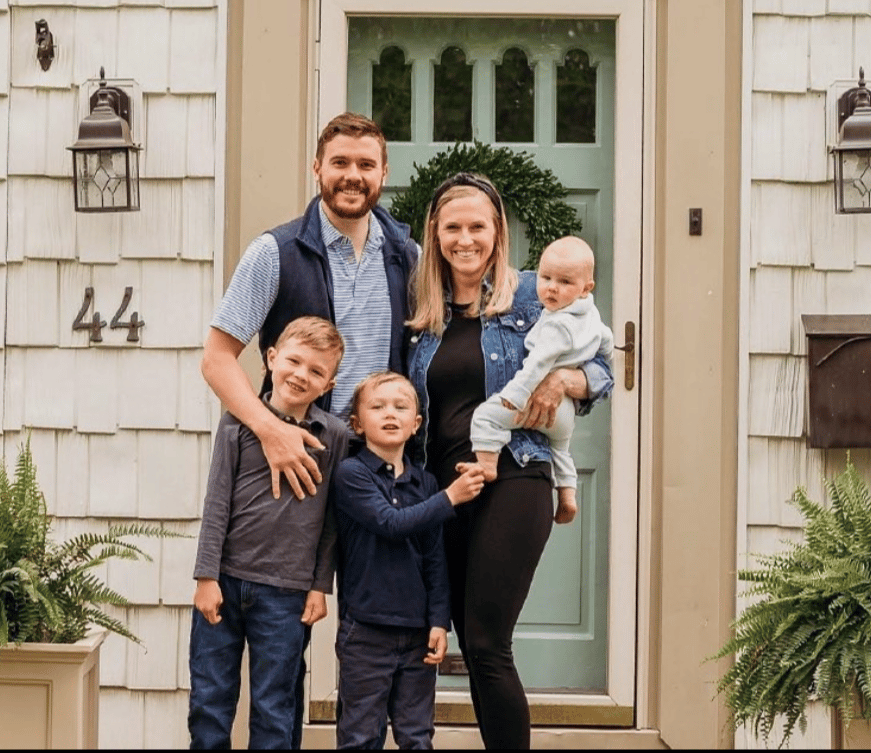
Moving Mentality

Can I take a vacation from packing?
Moving is stressful, and no matter how many times I move I have found that I need to mentally prep for it. In the past, moving day has crept up on me adding more stress to the big day. I recently read a book called, “The Compound Effect,” by Darren Hardy that changed my mindset for approaching this move. Instead of getting overwhelmed with the entire project, I broke down big tasks into smaller, more manageable ones.
Start by deciding if you plan to hire a moving company, move yourself, or a combination of both. Then, begin purging things you don’t want to bring with you and start packing items you won’t need for the next couple weeks/months. Once you have a plan, set aside time every day to tackle your to-do list. Mine seemed daunting at first, but I set aside small increments of time everyday to work on it. 30 minutes twice a day isn’t that bad, and if you move in 30 days, you will have 180 hours of packing under your belt!
Moving With Kids
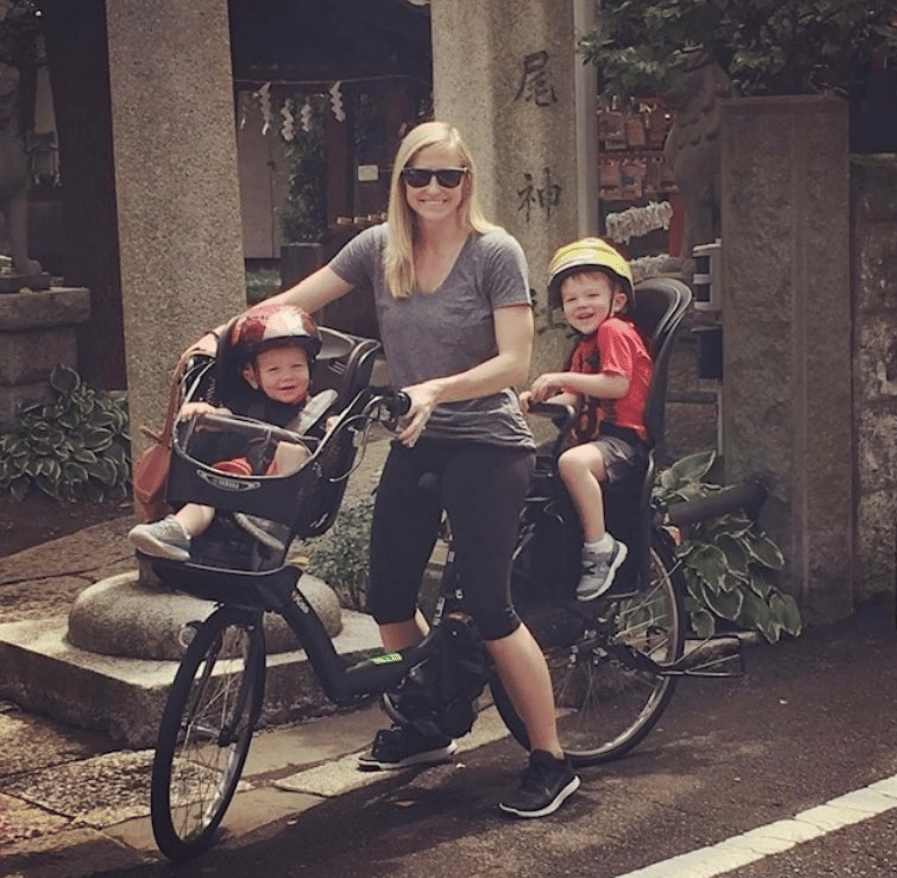
Preparation & Participation Are Key!
1. Regardless of their age, it’s important to talk to your children about moving; be open with the process and make plans to keep in touch with friends. There are also many age-level appropriate books to read as a family to help naturally bring up discussions around feelings.
2. Let your kids help pack and watch as things leave the old house and enter the new. If possible, spend time in both places so they see that their home is moving with them. If this is not possible, taking videos or pictures of the old house and making a photo book or showing them the videos at a later time is helpful during the transition to reference and reminisce.
3. Ask them for their input! When moving to a new home, making them feel part of the decision making process will give them a sense of empowerment and more “buy-in” (even if some decisions are already finalized – I have found involving them as much as possible pays off in the long run).
4. Give your kids a budget and tell them they can pick out something for their new room like a picture, toy, or paint color. This will help them get excited for their new space and hopefully make it feel more like home.
5. When you unpack, try to unpack the kids’ rooms first so they have more time to adjust and get used to their new space.
6. If your child is in school, talk to your guidance counselor or even a local child therapist. They can help give your child tips to get through this stressful time.
7. If your child will be starting at a new school, reach out to the principal and ask them to put you in contact with families of children that will be in the same class. It helps tremendously if you can schedule a meet-up prior to them starting, so on the first day they can recognize one familiar face!
Out With The Old
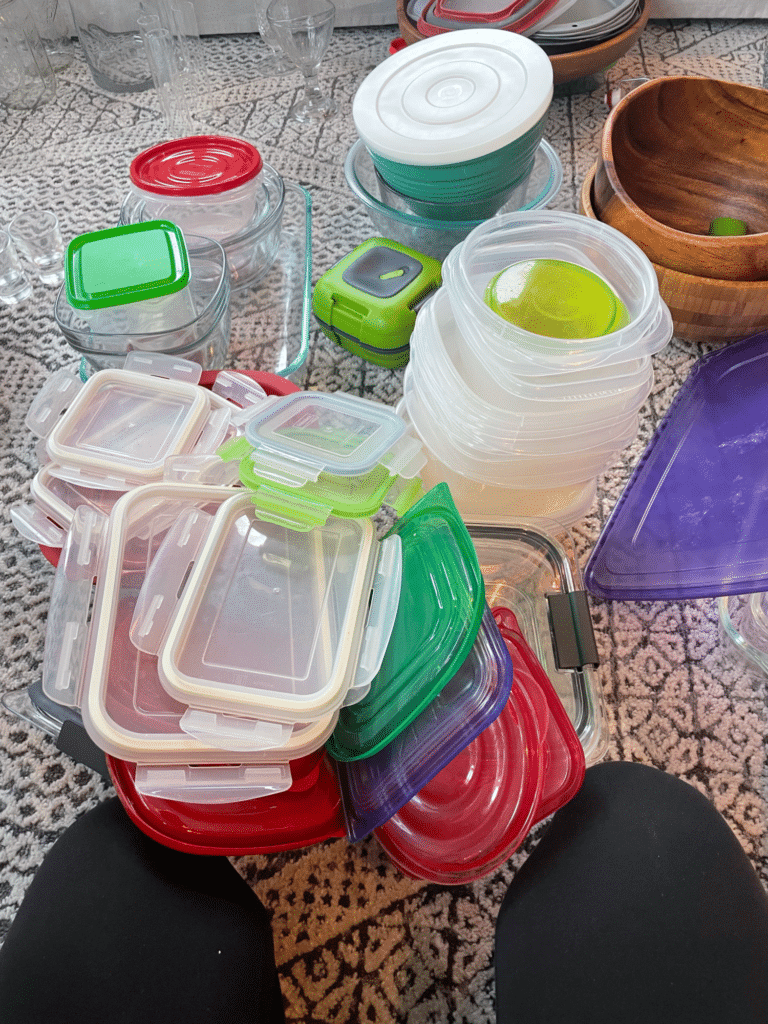
Why pay someone to move things you don’t use?
Purging is such an important step in preparing for a move. Go room by room and create three piles: keep, donate and trash.
Your donate pile could be a way to make some extra cash by planning a yard sale or selling items online. Donating to local organizations is also a great way to get rid of things you don’t want to use. Goodwill, animal shelters, Vietnam Veterans, homeless shelters, or local charity organizations will all take your belongings. Some of them will even drive to you and pick up your stuff!
Check below for organizations that accept donations.
Packing
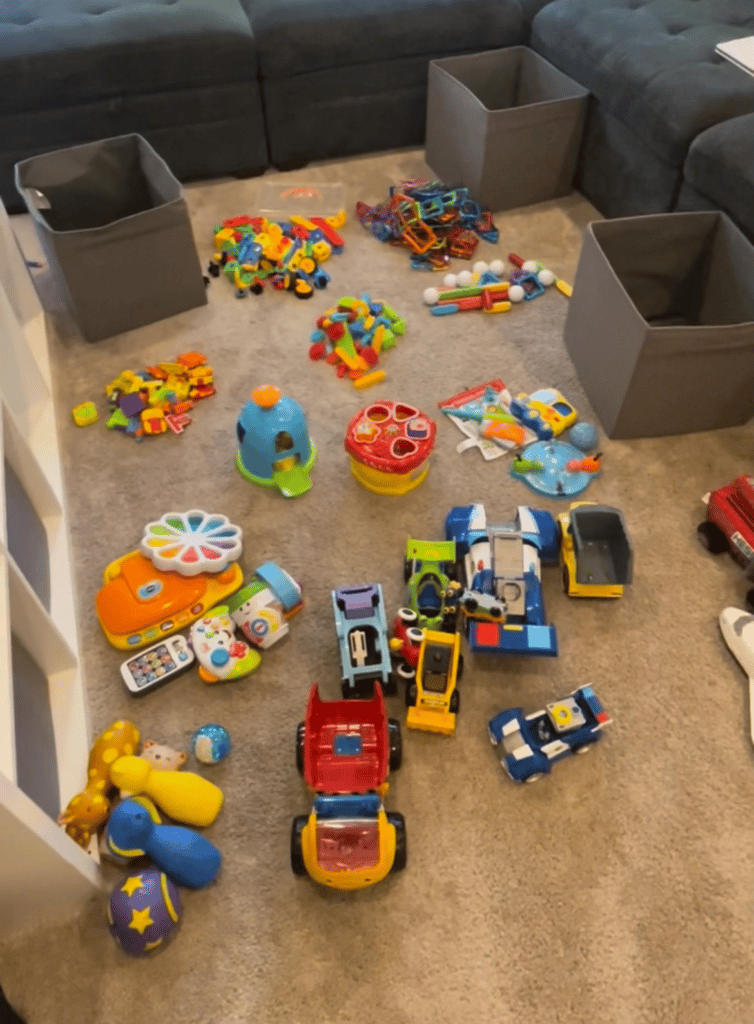
There is always so much to pack … any time saving tip is helpful!
Bedrooms:
Movers will not move dressers if the drawers are not emptied. To avoid them dumping the contents into boxes, pack your clothes into suitcases. When you get to your new home, simply roll your suitcase into the new room and unpack right back into the dresser.
Items in the closet can be easily moved by taking trash bags with a hole at the top for hangers to stick out, and pulling them over a group of clothes. You can place these into a wardrobe box on a rod with hangers in tact. Or, if moving close, hang in your car or lay flat in the trunk. Once you arrive in your new house, you can hang the clothes back up and remove the trash bag.
Kitchen:
Kitchens are my least favorite room to move. There are so many kitchen gadgets and breakables making it time-consuming to pack them all safely and label correctly. But, labeling is crucial in the kitchen so you don’t spend a week searching for your coffee maker! Be specific when you label boxes; try “utensils,” “coffee maker,” “knives,” “toaster,” etc… the more specific, the easier to find when unpacking!
If you keep your utensils in a tray, remove the tray from the drawer and tightly wrap with saran wrap. It makes it so much easier to unpack and slide into your new drawers!
Spices can be stored in pots and pans. Simply add then in pot, flip the glass lid upside down (so the handle isn’t sticking out) place dish towels on top and saran wrap or tape closed.
Sharp knives can be wrapped in oven mitts using a rubber band to secure.
Play Rooms, Bathrooms & Pantries:
If you have toys, bathroom items or unopened food that are already organized and stored in bins, consider wrapping the entire bin shut and packing them yourself in boxes. If moving close by, use the bin as the means of transporting the items to save on boxes! Once you arrive, simply place bins into their new places!
First Night Necessity Kit
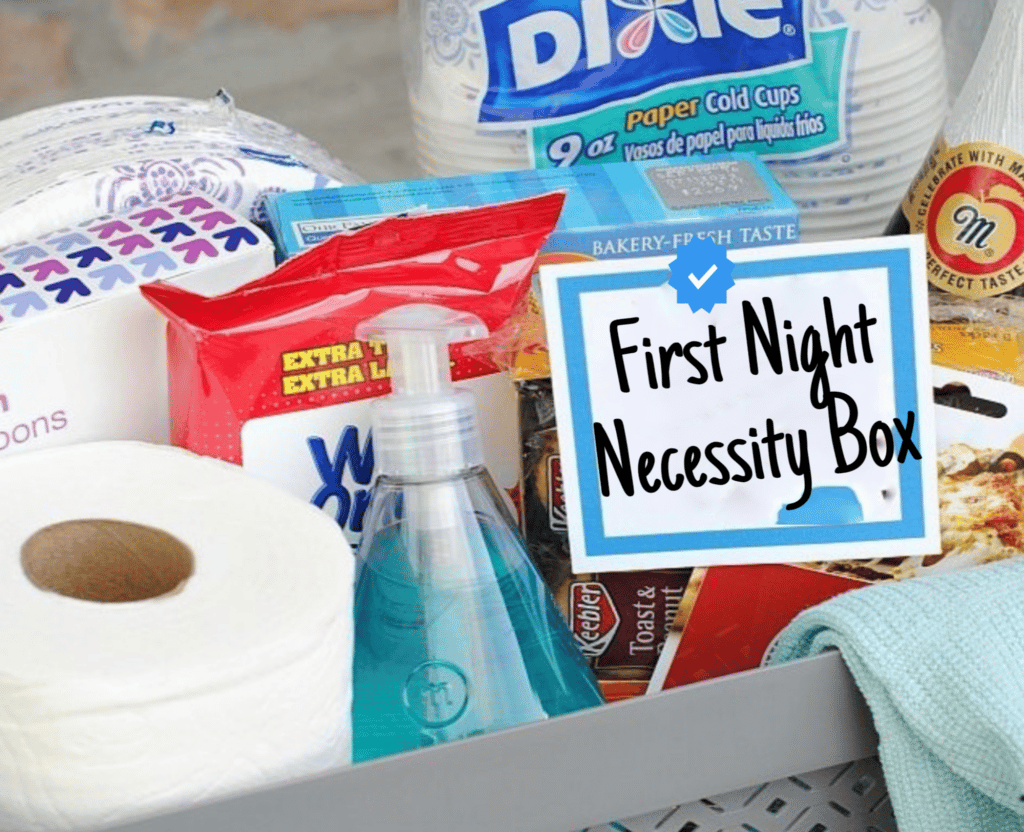
This one seems like a no-brainer, but it took me too long to figure out. A first night necessity kit is such a great way to keep everything you will need to make the first night (and day) in your new house successful.
What to pack in your first night box??
Sheets, Towels, Toiletries, Soap, Toilet Paper, Paper Towels, Paper Plates and Utensils, Cleaning Supplies, Scissors, Garbage Bags, Cell Phone Chargers, a Celebratory Adult Beverage
For kids pack the same as above, plus:
Stuffed Animals, Gaming Devices/iPads/ Kindles, Favorite Toys or Games, Water cups (for younger kids), Fan or Sound Machine
Don’t forget food, beds & food dishes for pets!
Cleaning
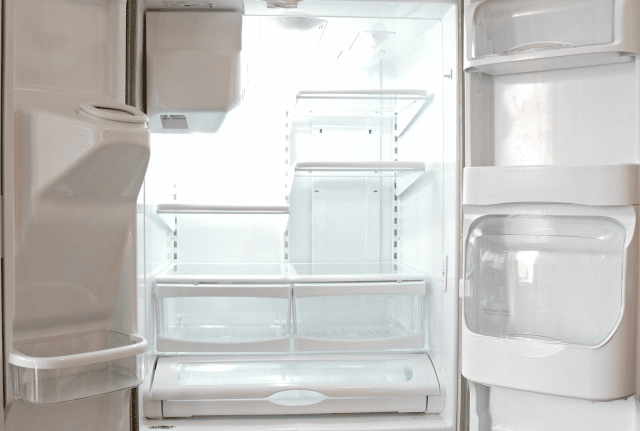
Before you leave your old house, take a look around – is it move in ready?
For the final walk-through, floors should be clean and free of debris, refrigerators should be emptied and cleaned, and no items should be left behind. Unfortunately, I have been to walk-throughs where the house is an absolute mess. It can tarnish what should otherwise be a happy and exciting day. I always advise to be thoughtful and treat others the way you wish to be treated! Hire cleaners for a “move-out” clean, or schedule sufficient time to deep clean yourself after everything is moved out.
When moving into your new home, it can be a great time to get carpets cleaned, wood floors refinished or have a cleaning crew come in. Whether you clean yourself or hire a cleaning crew – be sure to wipe down the insides of cabinets and drawers in the kitchen and bathroom before putting your items away.
Moving Day/Unpacking
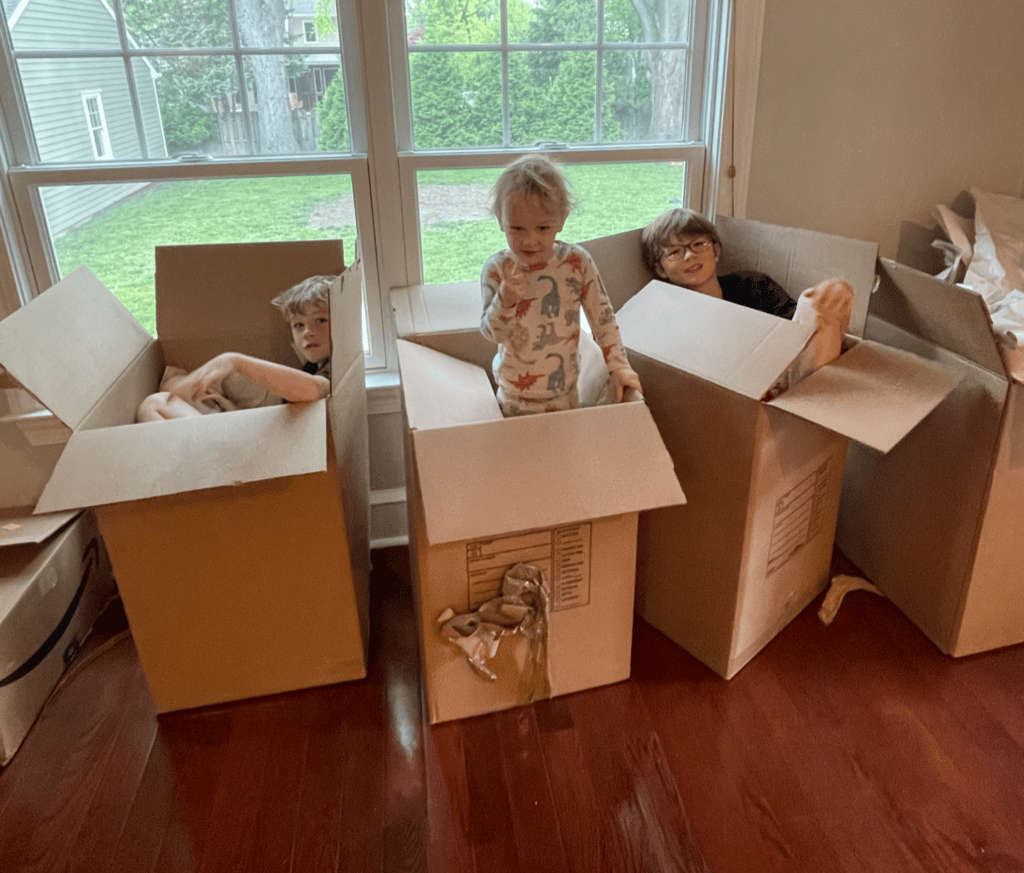
1. Always stay at your old home until the movers have everything in the truck. During one of our moves we discovered too late that an entire closet was missed.
2. Feed your movers – moving is hard work! I always like to provide coffee, plenty of water, and order lunch for the crew as a way to say “thank you!”
3. When you are at your new house, designate a room as a drop zone – a place to put boxes when you aren’t sure where they will go.
4. Try to go outside to meet your neighbors. Connecting with your new community is a great way to make you immediately feel at home in your new neighborhood.
Extra Tips

1. Plan easy meals and lean heavily on pre-made meals from local restaurants that you can reheat. Many places in our area offer complete meals that they will deliver to your door. (Keep scrolling for a list of favorites).
2. Put post it notes on furniture to let movers know the location it will go in the new house. Things like “basement,” “blue bedroom,” or “drop zone” can help the flow of moving day.
3. What’s a drop zone? Furniture or boxes that you aren’t sure about should go to the drop zone. If you have more than one floor in your house, make the drop zone on your main floor (not the basement), that way you don’t have to trudge up and down the stairs and move heavy boxes or furniture when you figure out where you want it to go.
4. This one seems like a no-brainer – but don’t make your boxes too heavy. Heavier items should be placed in smaller, more manageable boxes. Packing heavy items in larger boxes makes it awkward and impossible to carry.
5. Plan something for your kids/pets to do on moving day. People are coming and going and doors are left open. If you plan activities for your kids and a daycare for your pets, your moving day will be less stressful.
Moving Resources
Donation Places
Facebook Marketplace (or yardsale and buy nothing sites)
Ready Made Food
It’s Memorial Day Weekend!
This weekend we will be remembering the men and women who have lost their lives for our country. We are so thankful for their service and sacrifice.
There are many sites around Philadelphia where people can learn about various wars and what people went through during their time fighting for our country.
This May, we wanted to honor our fallen military by visiting some local sites where history has taken place.
Fort Mifflin
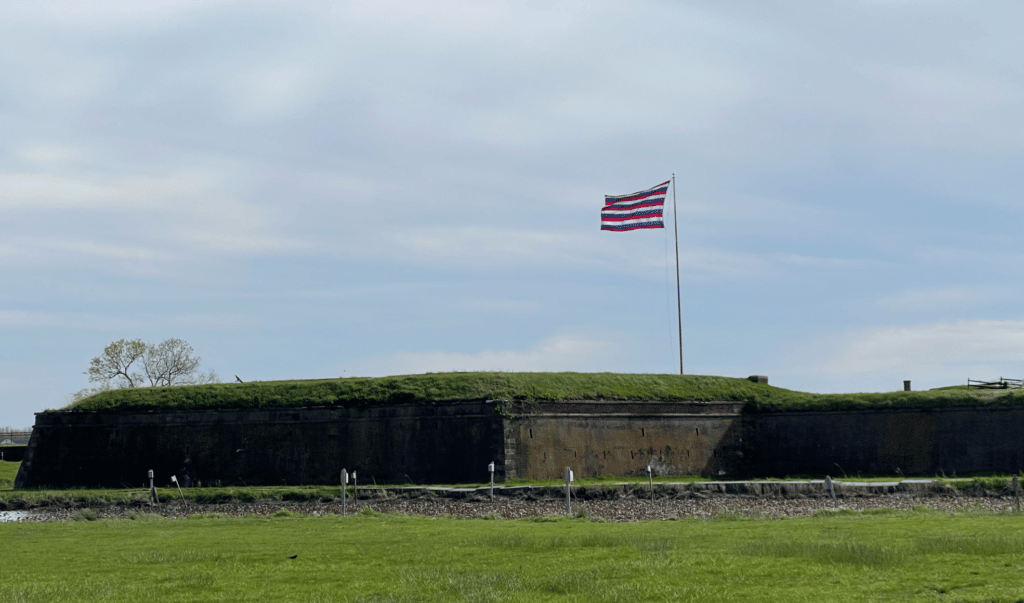
Have you ever flown into the Philadelphia Airport and noticed you were flying over a fort? That’s how we discovered Fort Mifflin. After flying over it, I started googling and found out about this gem.
Fort Mifflin is an intact Revolutionary War battlefield along the Delaware River in PA that held off the English Navy, allowing George Washington to arrive safely at Valley Forge.
During the Civil War, it served as a military prison. Prisoners were kept in casements and bomb proof shelters and lived in cramped, poorly ventilated, and dimly lit spaces. After the Civil War, they added a way for the military to shoot torpedoes into the Delaware River!
Between the Civil War and WWI, Fort Mifflin was basically a tourist destination, but during WWI & II, it was used to store ammunition.
In 1954, the base was decommissioned.
Today, visitors can walk around the fort on their own, or participate in guided tours and living history programs. When we went, volunteers were dressed in Revolutionary War gear and shot a cannon!
Battleship New Jersey

Red Bank National Park

Fort Mercer was located at Red Bank National Park, on the property of James and Ann Whitall. The Whitall’s were Quakers and opposed to war, they did not want a fort built on their property, but militia forces persisted.
The fort was built as a series of defenses to try to keep the British from reaching the nation’s capital, Philadelphia. They set up very long poles that were hidden in the water. As British ships sailed up the river, their boats would get impaled by the poles. While the British were trying to free their boats from the poles, the militia would bombard them with cannon fire in an attempt to sink their ships. (I wonder how many ships/treasure are in the Delaware??)
The British realized that they couldn’t sail up the Delaware and had to stop in the Chesapeake, and then march to Philadelphia. Hessian forces were a part of the group who marched with the British.
On Oct 22, 1777, the Hessians attacked Fort Mercer – there were twice the number of Hessian’s than militia, but despite that, the militia were victorious.
The Whitall’s house still stands and serves as a museum to visitors.
The Seaport Museum: The Becuna & Olympia Cruiser

Independence Seaport Museum in Philadelphia is home to 2 amazing boats that are available to tour.
The Becuna is a submarine that was commissioned in 1944 and was immediately sent to the Pacific Ocean. She sunk 3.5 ships during her service. Besides the Pacific, the Becuna has been to the Arctic, the Mediterranean, and the Atlantic Ocean. 80 men were able to live and work on the boat. (Women weren’t allowed to serve on subs until 2010!!)
The Olympia is a cruiser and the oldest steel ship still afloat. She was built in 1895 and was involved in the Battle of Manila Bay, which signaled the beginning of the Spanish-American War. Before she retired, her final job was to transport the Unknown Soldier that is now entombed at Arlington National Cemetery. The Olympia was the first ship to have sonography, refrigeration and radio communication.
